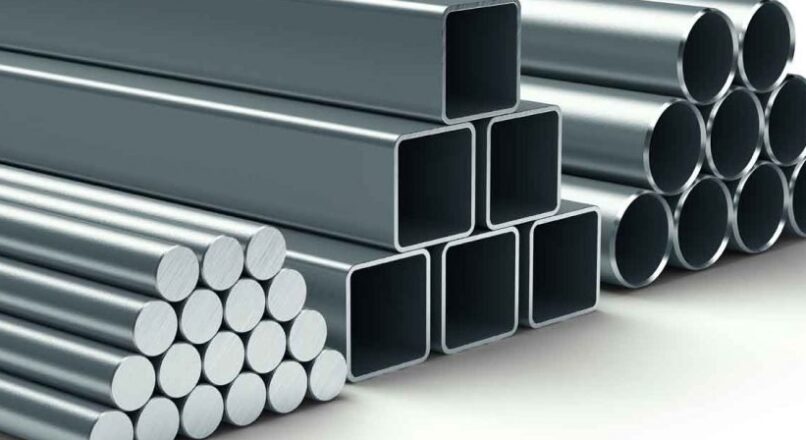
Loha Price Today: Understanding the Factors Affecting Iron Rates in India
Iron, commonly known as “loha” in India, is a fundamental material used in various industries, particularly construction, manufacturing, and infrastructure. The price of loha (iron) has a significant impact on the economy, as it influences the costs of building materials, transportation, and even consumer goods. Given the critical role iron plays in construction and industrial sectors, fluctuations in loha prices are closely watched by contractors, builders, and manufacturers alike.
In this article, we’ll dive into the factors that affect loha prices in India, current trends, and how companies like SteelonCall help make iron and steel products accessible to consumers at competitive rates.
Key Factors Influencing Loha Price
Loha prices are determined by multiple factors, ranging from global market trends to domestic demand and supply. Let’s take a closer look at some of the major factors:
Global Iron Ore Prices
Iron is made from iron ore, which is extracted from the earth and refined. The price of iron ore is a significant factor in determining the cost of iron. Global fluctuations in iron ore prices affect loha rates directly. These prices can rise or fall based on demand from large economies like China, changes in supply chains, and production levels of iron ore mines worldwide.
Domestic Demand and Supply
In India, domestic demand for loha is driven by several sectors, including construction, infrastructure, automobile manufacturing, and machinery production. When demand is high, loha prices tend to rise due to increased competition for resources. On the supply side, if there are production slowdowns at steel mills or mining disruptions, this can lead to a scarcity of loha and drive prices up.
Steel Production Costs
Loha is a primary material used to produce steel. When the costs of steel production increase, such as through higher energy prices or labor costs, the cost of loha also rises. India is one of the largest producers of steel, so the production costs for iron play a crucial role in determining local market prices.
Government Policies and Import Duties
Government policies, including import and export duties on iron and steel, also affect loha prices. High import duties make imported iron more expensive, leading to higher domestic prices. Conversely, subsidies on local production or lower export duties can reduce loha costs. Additionally, government initiatives for infrastructure development can increase demand, further impacting loha prices.
Currency Exchange Rates
India imports a significant amount of iron ore and other raw materials used in steel production. As such, the rupee’s value relative to other currencies, particularly the U.S. dollar, affects loha prices. When the rupee weakens, imports become more expensive, which can drive up the prices of iron and steel.
Seasonal Demand Fluctuations
Certain times of the year, such as the monsoon season, often see a slowdown in construction activities due to adverse weather conditions. As a result, the demand for loha can decrease during these months, potentially lowering prices. On the other hand, high demand during the dry season when construction activities are at their peak can lead to a rise in loha prices.
Current Trends in Loha Prices
In recent years, loha prices in India have experienced fluctuations due to global supply chain disruptions, geopolitical tensions, and changing economic conditions. With a focus on infrastructure development under the government’s initiatives, domestic demand has been strong, contributing to price stability despite international volatility.
As of today, loha prices continue to be influenced by the global demand for steel, especially from major economies. Any changes in policies or infrastructure investments, both domestically and globally, will have a direct impact on loha rates in the near future.
How Loha Prices Affect the Construction Industry
Loha is one of the main components in building materials like TMT bars, structural beams, and steel reinforcements, which are critical for infrastructure and residential construction. When loha prices rise, the cost of these building materials also increases. This, in turn, impacts the cost of construction projects, as contractors and builders may face higher expenses, which can affect project timelines and overall budgets.
Competitive Pricing and Real-Time Rates
Real-time updates on loha prices, allowing customers to make informed purchasing decisions. By offering competitive factory prices, they help contractors and builders reduce costs and manage budgets more effectively.
Wide Range of Products
a wide variety of iron and steel products, including TMT bars, iron pipes, and structural steel sections. This allows customers to choose from a range of options based on their specific requirements.
Quality Assurance
leading manufacturers to ensure that all products meet industry standards for quality and durability. This commitment to quality ensures that customers receive reliable materials that will stand the test of time.
Conclusion
Loha prices play a vital role in the economic landscape, influencing everything from infrastructure development to the cost of goods. By understanding the factors that impact loha rates, industries can better prepare for price fluctuations and manage project costs more effectively.
If you are looking for best quality steel online, please visit our website : www.steeloncall.com or you can contact us through our toll-free number: 18008332929

Leave a reply